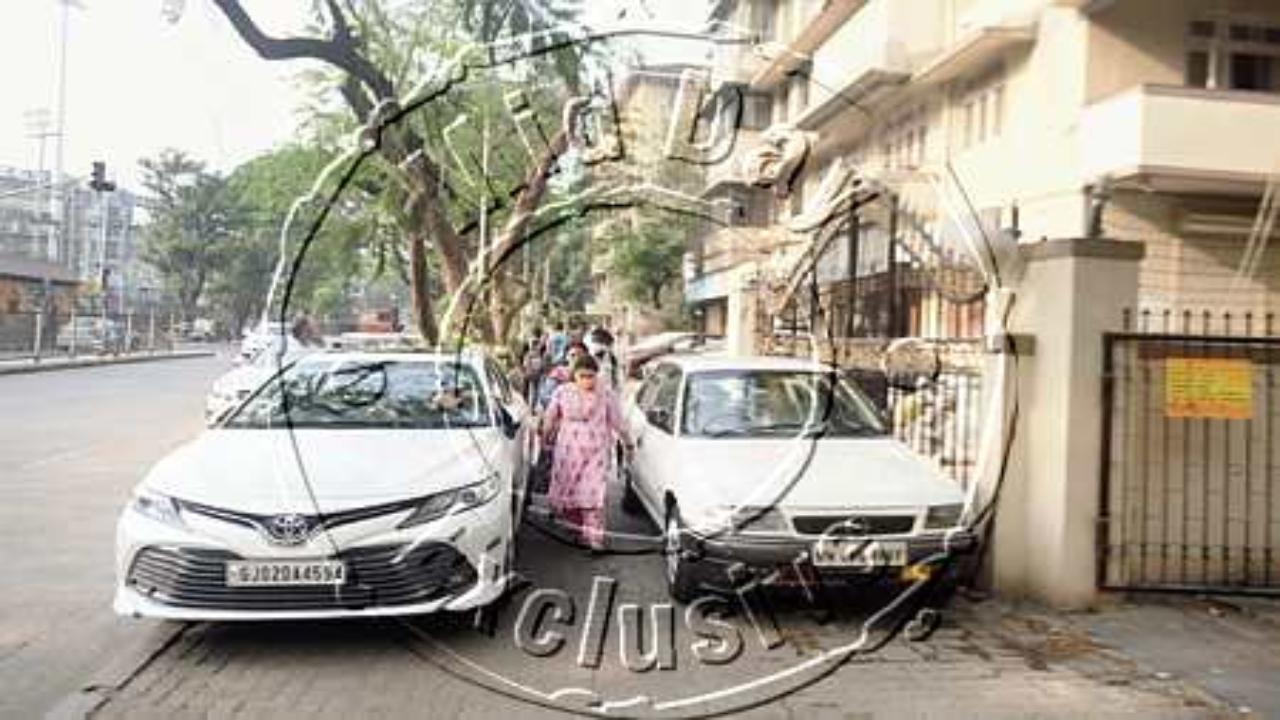Walkability cannot be improved by simply building a footpath or removing encroachments as streets play a larger role in urban life than being mere conduits for traffic

Parked cars on a pavement near Churchgate. File Pic
Dhawal Ashar, Akanksha Aggarwal and Tanushree Venkatraman
ADVERTISEMENT
In the past two decades, Mumbai has spent over Rs 15,000 crore in building large-scale projects including the Bandra-Worli sea link, 50+ flyovers and the Eastern Freeway.
At the same time, Mumbai has also witnessed an exponential rise in its vehicular population—it went up by 109 per cent between 2009-2019. This also led to the widening of key arterial roads like SV Road, LBS Marg, Linking Road, Andheri-Ghatkopar Link Road.
While these projects were meant to ease travel, they only led to increased traffic congestion and travel time. Referred to as ‘induced demand’ in transport planning parlance, it is proven that more roads will only encourage more people to drive, worsening the existing traffic situation.
Nearly 51 per cent of trips in Mumbai are made on foot, and a mere 7 per cent of trips are by cars (Comprehensive Mobility Plan, 2014), yet all our efforts are diverted to building infrastructure for cars. This will not help us build our way out of congestion.
While it is important to build connectors, the focus needs to shift from moving vehicles to moving people.
Streets for people
Many global cities have demonstrated that designing and implementing urban road infrastructure, by prioritizing pedestrians and non-motorised transport such as cycling is a better way to resolve traffic woes.
Mumbai is at a critical juncture with the threat of increased climate risks and one of the many ways of mitigating it is to improve walkability.
This cannot be done by simply building a footpath or removing “encroachments”. One must understand the multifunctional nature of streets.
Streets are not just conduits for traffic. Streets play a larger role in urban life, acting as enablers for commerce and leisure. Streets are where citizens meet, interact, celebrate festivals, and buy goods for their everyday needs.
Streets are also the largest contiguous network of public spaces in any city. While city planners are looking for spaces for recreation, there are spaces on streets that can be redesigned to add vibrancy, encourage walking and cycling and offer space for organized commercial activities.
Any effort to improve walkability will have to account for all these functions.
Where is the space?
It is often cited that our streets do not have enough space. But that is not entirely true. A preliminary survey on the utilisation of space, on 10 prominent roads in the city (including SV Road, Senapati Bapat Marg and Hill Road), revealed that 25 per cent to 40 per cent of the road space is either unutilized or underutilized. Poorly allocated street space is what needs our attention.
Redesigning the HP Junction in Bandra with continuous footpaths and tighter turning radii for cars led to lowered conflicts, improved traffic flow by 20 per cent and improved accessibility for all street-users. The design changes reclaimed over 500 square metres of active public space. Similarly, re-designing the Kalanagar junction, near Bandra-Kurla Complex, increased the area of active public spaces from 4,370 square metres to 31,500 square metres.
The interventions also led to shortened crossing distances for pedestrians and reduced the number of conflicts between vehicles and pedestrians.
Designing is key
Pedestrian safety and accessibility on streets can be improved by providing simple elements like kerb extensions, protected waiting areas, dedicated crossings, wheelchair ramps and unobstructed and walkable footpaths. This will not only make walking comfortable for pedestrians but also streamline traffic movement.
Streets must also have sufficient lighting, by night, which makes movement safer and inclusive for all, especially women and children. A holistic street design includes increasing vegetation cover and permeable surface—Trees and foliage reduce the heat island effect while permeable surfaces reduce runoff that otherwise contributes to urban flooding.
However, this cannot be achieved unless backed by the combined expertise of civil engineering, urban design, and traffic engineering. There also needs to be a complementary focus on transforming tender processes. We also need to look at capacity-building programmes for engineers and contractors and provide them with the support needed to ensure the desired implementation.
Mumbai is currently undergoing a massive infrastructure overhaul with the development of a 337-km Metro network, a coastal road and a trans-harbour link connecting the city to Navi Mumbai. This is the right time to look at our streets as critical assets for the city and its people. This transformation can save lives, improve traffic efficiency, combat the effects of climate change and help us navigate towards a more equitable future.
(Ashar is Head, Integrated Transport with World Resources Institute India (WRI India). Aggarwal and Venkatraman work as Senior Project Associate and Communications Manager respectively with the same organization. Views expressed by the authors are personal)
 Subscribe today by clicking the link and stay updated with the latest news!" Click here!
Subscribe today by clicking the link and stay updated with the latest news!" Click here!







